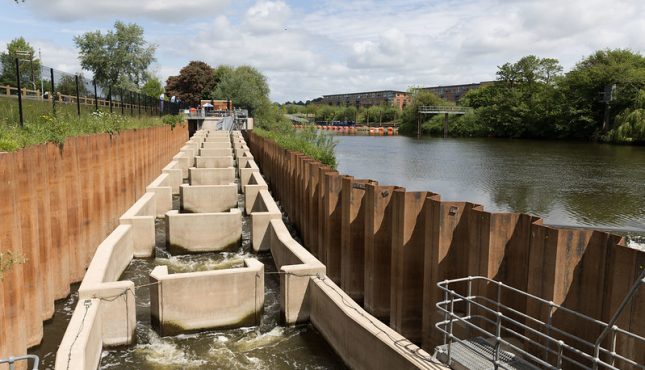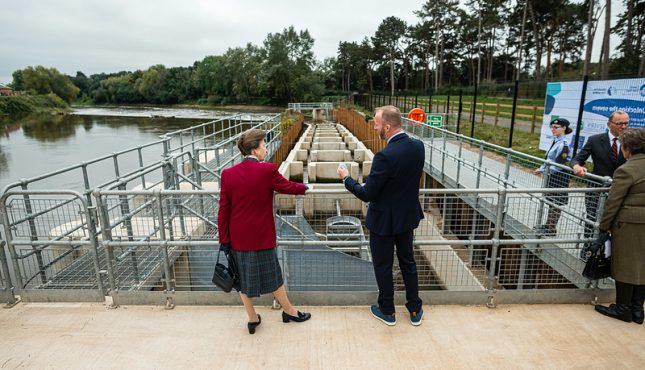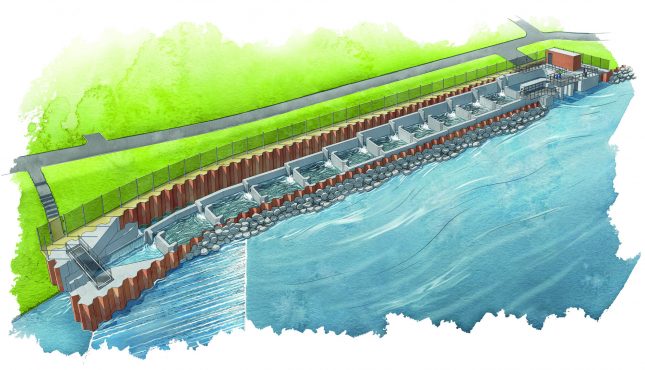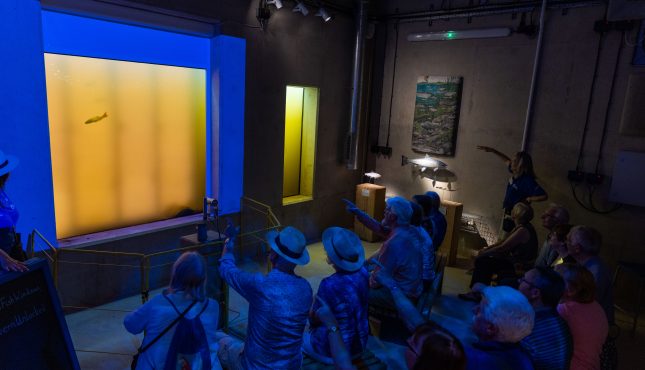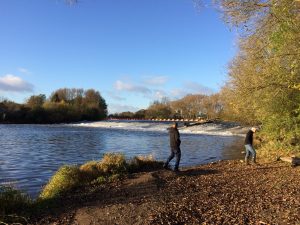Diglis Fish Pass – Facts & Figures
This is the first first fish pass that twaite shad and other fish migrating up from the sea meet on their way upriver. It is the biggest of all the fish passes on Unlocking the Severn, and the biggest fish pass of it’s kind in England and Wales at the time.
It contains a unique underwater viewing window that allows us to monitor the endangered fish migrating upriver to spawn and also to give members of the public their chance to have a face to face encounter with wild fish of the Severn swimming by!
This pass is 100 metres long, 8 metres wide and 5 metres deep. It is easy to lose the sense of it’s size now that the water is flowing through it but do check-out some of the construction pictures in the photo story below where you see how small the construction workers look in the bottom of the pass!
